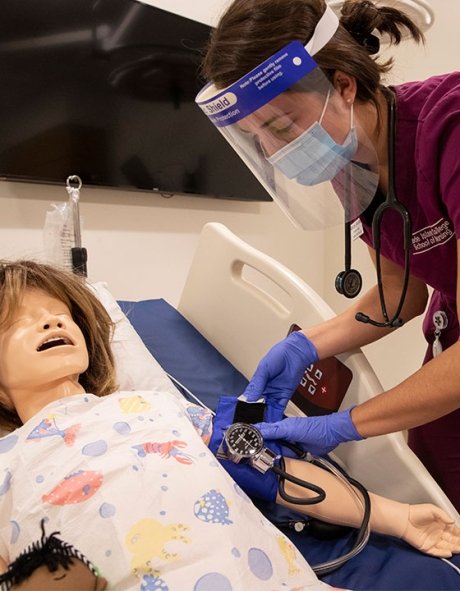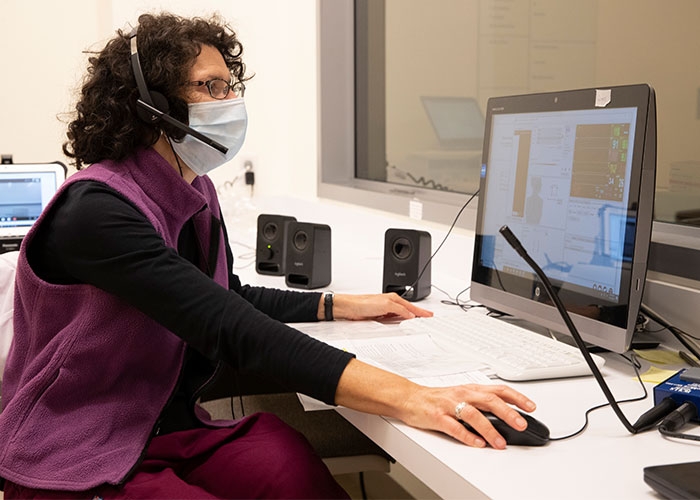Using High-Tech Simulators to Educate Future Nurses
- News & Events
- News
- Using High-Tech Simulators to Educate Future Nurses

Rhode Island College School of Nursing — a regional leader in innovation and simulation.
RIC nursing student Morgan LaPlume pauses before entering the hospital room of a five-year-old child lying in bed in excruciating pain. She has been diagnosed with sickle cell anemia.
All that LaPlume has learned in her nursing courses must come to the fore now. She knows she is being observed from a control room.

The first thing she’ll need to do is get a report of the child’s condition. In treating the child’s pain, there are procedures she’ll need to get right, like the appropriate way to administer an opioid through an IV and the appropriate opioid level.
LaPlume knocks on the door and then gently pushes it open.

The hospital room is actually a simulation lab at the Rhode Island Nursing Education Center at South Street Landing in the heart of Providence. The five-year-old is a mannequin or simulator who is being controlled by the professor’s graduate assistant.
Like a real human being, the simulator can speak, blink, breathe, cry, has a heartbeat and pulse, lung and bowel sounds, displays vital signs and can even receive injected medications. Should the wrong medication be given, it will show up in the vital signs on the overhead monitor.
Following the training, LaPlume will receive feedback on her performance in a debriefing room. This will allow her to refine and improve her skills.

Assistant Professor of Nursing Penni Sadlon is director of simulation for the School of Nursing and drives simulation best practices and faculty development in simulation. She also teaches undergraduates, trains graduate assistants and advises graduate and doctoral students.
“The purpose of simulation training,” she says, “is to allow students to learn theory in the classroom and then apply it in a simulated environment.”
Real-world case scenarios, many of which Sadlon has written, prepare nursing students for real-world situations. Faculty also write and facilitate scenarios based on what they’ve taught in class.
Scenarios could include: chest pain mimicking a heart attack, chronic obstructive pulmonary disease (COPD), substance abuse or an allergic reaction.
Salon admits that simulation-based learning is expensive. There are different types and classifications of simulators and their cost vary according to the degree of their resemblance to reality.
“Most of the simulators we use are high-fidelity mannequins,” Sadlon says. “They run from $90,000 on up.”
A less expensive way of training is through the nursing school’s online simulation program VSims – virtual simulations. “This program has been particularly helpful during COVID when students were unable to practice in the lab,” Sadlon says.
Students also work with individual body parts called “partial task trainers” in order to master certain medical procedures. For instance, they may work with a pelvis to learn how to insert a urinary catheter.
Recently the School of Nursing received a $3 million gift – the largest in RIC’s history – by philanthropist Edward Avedisian. Of the $3 million, $2,900,000 will fund the Zvart Onanian Endowed Professorship to support the integration of innovative teaching and research in the area of simulation.
Whatever simulator nursing students train on, they are free to make mistakes and learn from those mistakes without fear of harming the patient. Making mistakes, in fact, is critical to the learning process. With practice, they develop their problem-solving skills, decision-making skills, communication skills, teamwork abilities and diagnostic skills. Ultimately, they become better practitioners.
